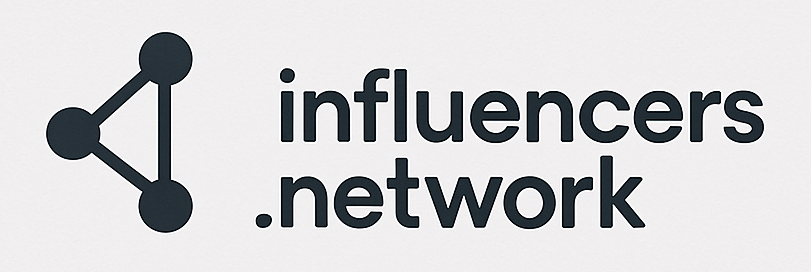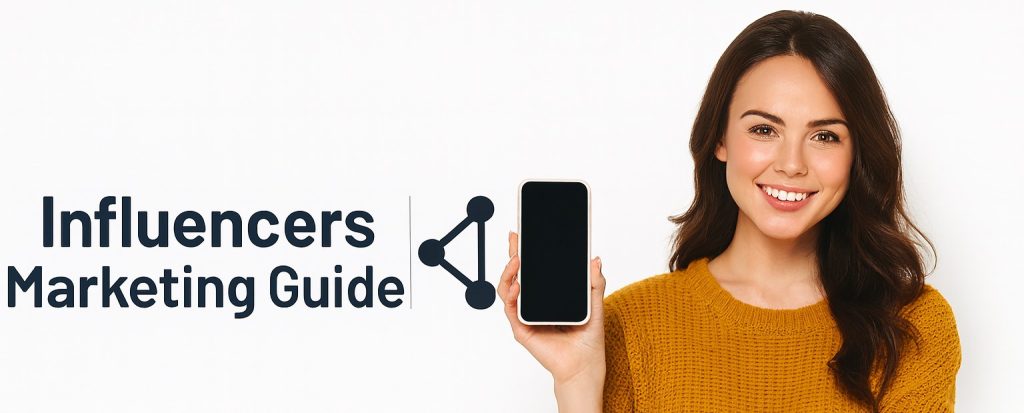
Influencer marketing is all about partnering with influencers to expand your brand’s visibility and strengthen awareness. With the right investment, it can solidify your position in the market while fostering trust and credibility with your audience. When executed effectively, an influencer campaign has the power to significantly boost your business’s bottom line.
That said, achieving a strong return on investment (ROI) requires careful planning and execution.
This guide will walk you through how to set up your campaign for success by covering:
- The core principles of influencer marketing and why it matters.
- Expert advice on identifying, hiring, and collaborating with the right influencers.
- A step-by-step framework for building a winning strategy.
- Proven best practices to maximize ROI.
- Ways to streamline your workflow using an influencer marketing platform.
What Is Influencer Marketing?
Imagine this: you’re scrolling through Instagram and see your favorite fitness coach sharing the protein powder they use every morning. Or maybe you’re on TikTok and a beauty vlogger walks you through their skincare routine, casually highlighting a new moisturizer. Chances are, you’re more likely to trust their recommendation than a banner ad on a website.
That’s influencer marketing in action. At its core, it’s about brands teaming up with influencers—people who have earned credibility and built a strong following—to share products or services with their audience. When done right, it’s not just about visibility; it’s about building trust, sparking conversations, and creating connections that last.
Before we dive into the types of influencers you can work with, let’s look at why this strategy has become such a powerful tool for brands.
The Role of Social Media Influencers
Social media influencers are more than just content creators. They’re storytellers, trendsetters, and trusted voices in their communities. Their recommendations feel genuine because they’ve built authentic relationships with their followers over time.
Take, for example, a food blogger who shares easy weeknight recipes. When they recommend a new cooking gadget, it doesn’t feel like an ad—it feels like advice from a friend who’s already tested it out. Or think about a travel influencer posting breathtaking photos from a hidden beach in Greece. Suddenly, that destination shoots to the top of your bucket list.
By collaborating with influencers, brands tap into this trust. Instead of interrupting audiences with traditional ads, they’re showing up in the form of relatable stories and real experiences. That’s the magic of influencer marketing—it bridges the gap between promotion and authenticity.
Influencer Marketing Across Social Media Platforms
Influencer marketing isn’t one-size-fits-all. Each social platform has its own culture, audience, and content style—so the way you collaborate with influencers should adapt to fit. By tailoring your approach, you’ll not only maximize reach but also create more authentic, engaging campaigns. Let’s break down how influencer marketing works best on today’s top platforms, along with examples from brands that got it right.
Instagram: Visual Storytelling at Its Best
Instagram is a powerhouse for influencer collaborations thanks to its focus on visuals. From eye-catching product shots and lifestyle content to Stories and Reels, the platform is built for showcasing products in creative, relatable ways. Brands often partner with influencers for product placements, giveaways, or even account takeovers—leveraging Instagram’s advanced targeting tools to connect with niche audiences.
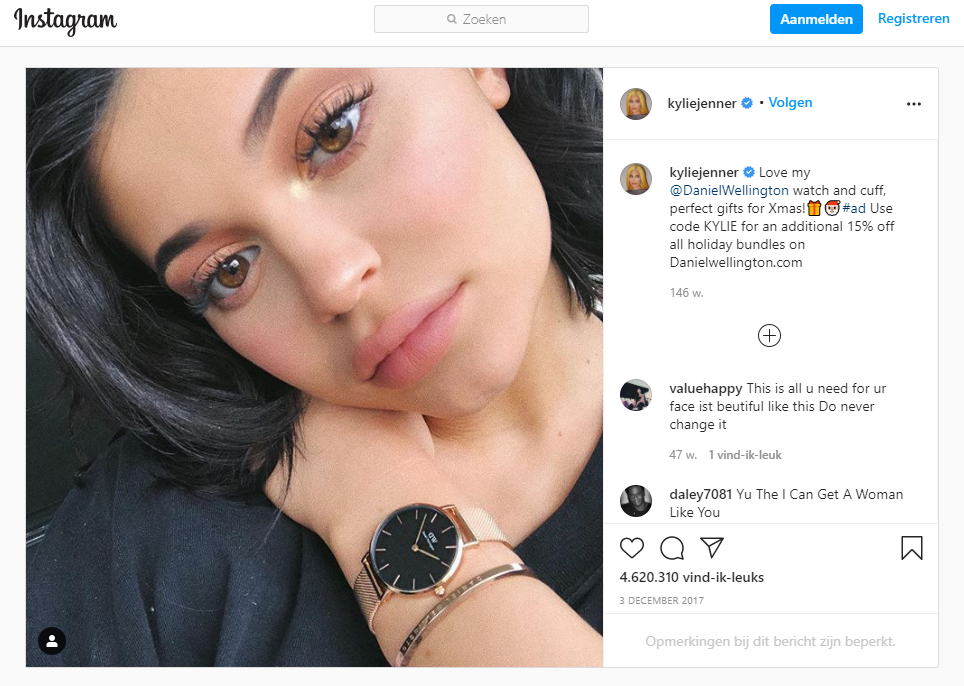
Example: Fashion brand Daniel Wellington built its reputation almost entirely through Instagram influencers, sending them free watches and encouraging them to share lifestyle shots. This grassroots approach turned into a global success story.
Facebook: Community and Conversation
With its broad user base and strong sense of community, Facebook is ideal for longer-form content and interactive campaigns. Sponsored posts, group engagement, and Facebook Live sessions allow influencers to connect with followers in a more personal, conversational way. This makes it a great platform for building trust and fostering deeper discussions around your brand.
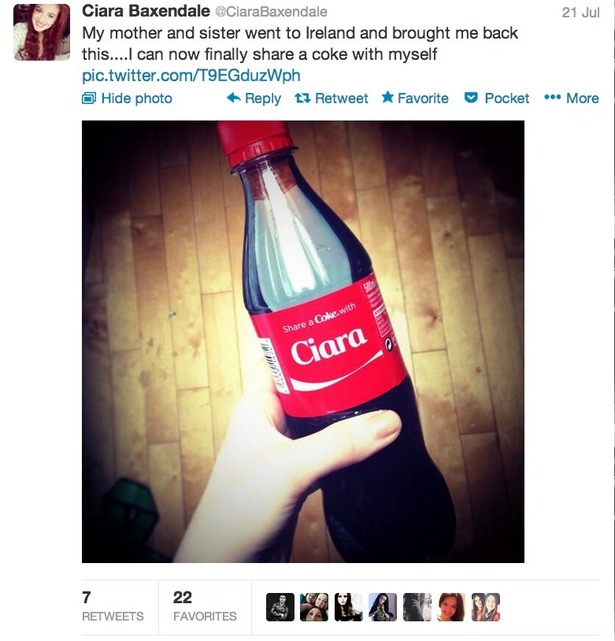
Example: Coca-Cola has used Facebook Live campaigns with influencers to engage fans in real time, combining entertainment with community-building challenges that spark conversation across groups.
TikTok: Creativity and Virality
TikTok is all about creativity, trends, and speed. Its short-form videos have incredible viral potential, making it a perfect fit for influencer collaborations that feel fun and authentic. Think hashtag challenges, quick tutorials, or playful skits that encourage audience participation—especially effective with Gen Z and younger audiences.
@martagleznino join the #denimchallenge with me💖 @leftiesofficial #inmydenim #fashion ♬ edamame – bbno$
Example: Guess launched the #InMyDenim campaign on TikTok, partnering with influencers to show off creative ways to style denim. The challenge quickly went viral, generating thousands of user-created videos and huge engagement.
YouTube: In-Depth Content and Reviews
When it comes to long-form storytelling, YouTube is king. Influencers on this platform can create detailed product reviews, unboxings, and tutorials that build trust by showing real results. Because videos are searchable and evergreen, they continue to drive value long after they’re posted—making YouTube a smart investment for brands looking to educate and engage.
Example: GoPro has built its brand largely through YouTube influencers, encouraging creators to film adventurous content using their cameras. These authentic, action-packed videos doubled as tutorials and product showcases, inspiring viewers while highlighting the camera’s capabilities.
Twitch: Real-Time Engagement
Twitch thrives on live interaction, making it especially powerful for gaming, tech, and lifestyle audiences. Partnering with streamers allows brands to be part of the conversation in real time—through product shoutouts, live demos, or Q&A sessions during streams. The immediacy of live content creates a sense of authenticity and trust that’s hard to replicate elsewhere.
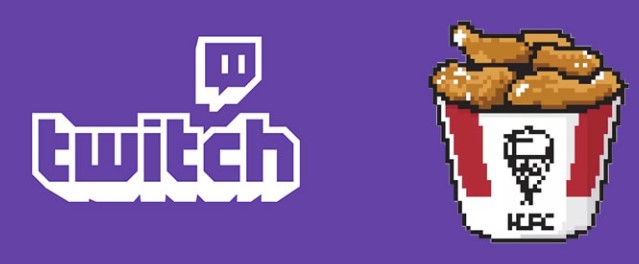
Example: KFC partnered with popular Twitch streamers during live gaming sessions, where influencers integrated the brand into real-time gameplay with quirky promotions. This helped KFC connect authentically with the gaming community.
Benefits of Influencer Marketing
Influencer marketing offers far more than just visibility — it can transform how your brand connects with people online. Here are some of the key benefits:
- Build trust and loyalty
Tap into the credibility influencers already have with their followers to foster authentic trust in your brand. - Boost brand awareness
Expand your reach by getting in front of new audiences and strengthening your online presence. - Enhance your content strategy
Access fresh, creative content from influencers that you can repurpose across your own marketing channels. - Reach the right audience
Work with influencers whose communities align perfectly with your niche, ensuring your message lands with the right people. - Strengthen brand authority
Position your business as a trusted leader in your space through endorsements from respected voices. - Increase engagement
Spark more meaningful interactions with personalized campaigns that feel relatable and human. - Drive website traffic
Send qualified visitors to your site while improving metrics like time on page and click-through rates. - Generate sales
Convert engaged followers into loyal customers through targeted influencer partnerships.
Types of Influencers by Audience Size
Not all influencers are created equal. Choosing the right type of influencer for your campaign depends on your goals, budget, and the audience you want to reach. Each influencer tier offers unique advantages, and understanding these differences can help you maximize ROI.

Nano Influencers (1K – 10K followers)
Nano influencers may have small followings, but their impact is anything but. With highly engaged audiences in specific niches, they’re perfect for local campaigns or brands that value authenticity over mass reach. Their close-knit communities often see them as friends, which translates into deeper trust and higher engagement rates.
Micro Influencers (10K – 100K followers)
Micro influencers strike a sweet spot between reach and engagement. They’re relatable, approachable, and trusted voices within niche communities. Their audiences often feel a strong personal connection, making them excellent partners for brands looking to balance targeted visibility with meaningful interactions — and often strong conversion rates.
Macro Influencers (50K – 1M followers)
Macro influencers bring scale. With broad appeal and established credibility, they’re often industry leaders, thought shapers, or social media personalities. Partnering with them can quickly boost brand awareness across diverse demographics. However, while their reach is significant, engagement rates can sometimes dip compared to smaller influencers.
Mega Influencers (1M+ followers)
Mega influencers are the celebrities of the digital world. With audiences in the millions, they’re best for high-impact campaigns designed to create buzz on a large scale. While their reach is unmatched, their high cost and typically lower engagement rates mean brands should carefully weigh ROI before investing.
AI Influencers
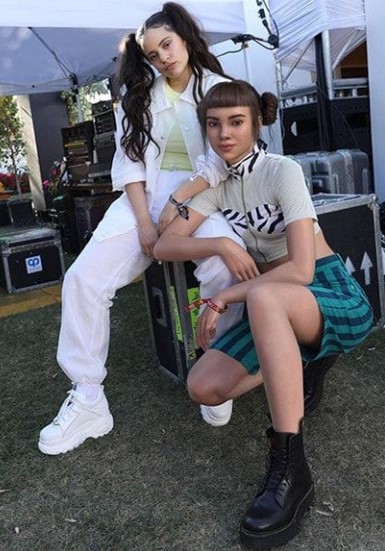
A growing trend in the digital space is the rise of AI influencers — virtual personalities created with artificial intelligence and CGI. These computer-generated influencers, like Lil Miquela or Shudu, often have massive followings and collaborate with global brands just like human creators.
AI influencers offer brands full creative control, consistency, and scalability, but they also spark debates around authenticity and transparency. As technology advances, they’re becoming an increasingly important part of the influencer marketing landscape.
There are several companies working on the creation of digital influencers. At Influencers Network, we work with most of them, while have our own AI development department to keep up with the latest technologies and trends. In order to offer our clients the best possible marketing resource to promote their brand.
✅ Pros of AI Influencers
- Full creative control – Brands can design personalities, looks, and storylines without relying on human schedules or preferences.
- Consistency – Virtual influencers always deliver on time, maintain brand voice, and don’t risk personal scandals.
- Scalability – AI influencers can be adapted to different languages, markets, and cultural contexts at scale.
- Innovation factor – Partnering with an AI influencer can position a brand as forward-thinking and tech-savvy.
⚠️ Cons of AI Influencers
- Authenticity concerns – Followers may question whether a computer-generated persona can build genuine trust.
- Limited relatability – Unlike human influencers, AI characters don’t live real experiences, which can reduce emotional connection.
- High production costs – Designing and maintaining a realistic AI influencer requires significant investment in tech and creative teams.
- Ethical debates – Issues like transparency, disclosure, and the impact on human creators remain hot topics.

Types of Influencers by Niche or Sector
Niche influencers are creators who focus on specific industries or areas of interest. By cultivating highly engaged communities around their expertise, they offer brands a direct way to connect with targeted audiences. Here are some of the most prominent niches in influencer marketing:
Food Influencers
These influencers specialize in all things gastronomy — from recipe development and restaurant reviews to visually captivating food photography and creative cooking content.
Lifestyle Influencers
Lifestyle creators share insights across a wide range of topics, including home décor, personal wellness, fashion, and everyday productivity tips. Their versatility makes them a popular choice for brands seeking broad yet relatable engagement.
Fitness Influencers
Focused on health, exercise, and wellness, fitness influencers inspire audiences with workout routines, motivational content, and guidance on living a healthier lifestyle.
Beauty Influencers
Beauty influencers are trendsetters in makeup, skincare, and haircare. Their tutorials, product reviews, and personal recommendations strongly influence purchasing decisions in the beauty sector.
Travel Influencers
Travel creators showcase destinations, itineraries, and unique experiences around the globe. They inspire their audiences with breathtaking visuals, travel tips, and lifestyle storytelling.
Gambling (iGaming) Influencers
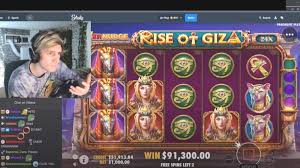
Gambling influencers, also known as iGaming influencers, are content creators who specialize in online betting, casino games, esports wagering, and poker-related content. They often stream live gameplay, share betting tips, or review platforms, building communities of highly engaged followers who trust their expertise.
For brands in the iGaming industry, collaborating with these influencers can boost visibility, attract new players, and drive traffic to platforms. However, due to strict regulations in many regions, campaigns with gambling influencers require careful compliance with advertising laws and responsible gaming guidelines.
Our team has specialized in this topic, to help our users find the perfect match, and platform for their iGaming product.
Tech Influencers
These influencers bring clarity to complex topics by reviewing gadgets, apps, and innovations. They often serve as trusted voices for audiences looking to stay ahead in the world of technology.
Kid Influencers
Kid influencers create family- and child-focused content, ranging from toy reviews and unboxings to educational videos that appeal to both children and parents.
Fashion Influencers
Fashion influencers highlight the latest style trends, provide outfit inspiration, and showcase seasonal collections, often shaping the way audiences engage with clothing and accessories.
Gaming Influencers
Gaming creators dominate platforms like Twitch and YouTube with live streams, walkthroughs, reviews, and community-driven content, making them central figures in the gaming industry.

How to Build an Influencer Marketing Strategy
A successful influencer marketing strategy doesn’t happen by chance — it’s built step by step. From finding the right partners to measuring ROI, every stage plays a role in shaping how effective your campaign will be. Here’s a complete roadmap to help you get started.
1. Finding the Right Influencers
The influencers you choose can make or break your campaign. It’s not just about follower counts — it’s about finding creators who truly align with your brand and audience.
Key factors to consider:
- Audience fit: Review demographics like age, location, gender, and language. Do they match your target market?
- Content style: Make sure their tone, creativity, and values align with your brand identity.
- Performance: Look at metrics tied to your goals, whether that’s awareness, engagement, or conversions.
- Authenticity: Avoid fake influencers by checking for inflated follower counts or suspicious engagement.
- Platform presence: Choose influencers who are active where your audience spends time (Instagram, TikTok, YouTube, etc.).
2. Analyzing Influencers
Before you commit, dive deeper into performance and quality.
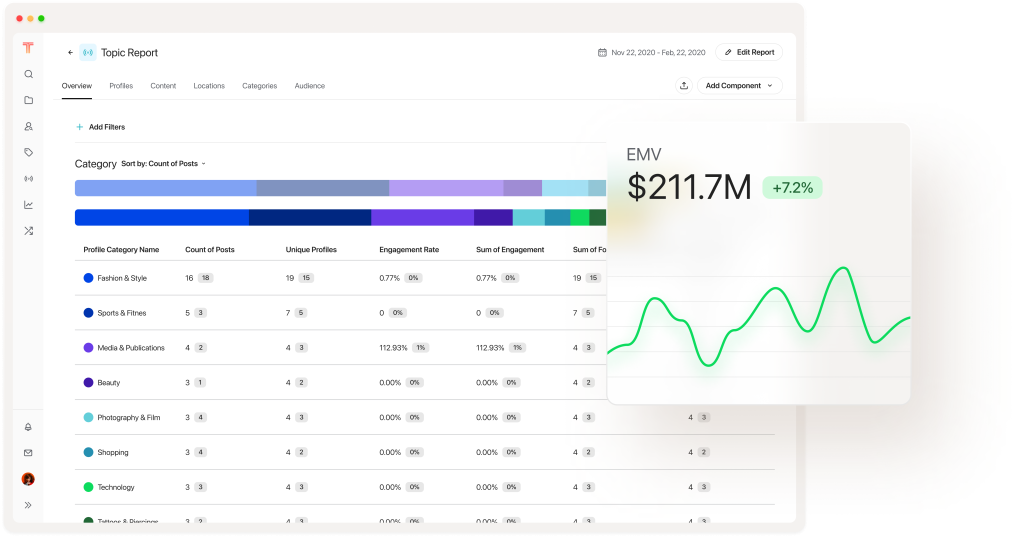
- Audience demographics: Ensure their followers look like your ideal customers.
- Content quality: Consistent, professional, and on-brand content is a must.
- Engagement metrics: Focus on meaningful interactions over vanity numbers. Ask for past campaign data like CTRs or conversions if possible.
- Cross-platform reach: Some creators thrive on Instagram but not on YouTube — pick those who shine where it matters.
- Lookalikes: Identify similar influencers as backups or to expand your reach.
3. Contacting Influencers
Outreach is where relationships begin. The key: be professional, but personal.
- Direct messages (DMs): Ideal for casual intros on platforms like Instagram or TikTok. Keep it short, friendly, and genuine.
- Email: Craft personalized emails that highlight why their content resonates with your brand. Explain the mutual value and outline campaign goals.
- Follow-up cadence: Have a structured plan for reminders without spamming. Midweek mornings often work best.
- Templates: Use outreach templates but tailor them for initial contact, follow-ups, and closing. Always include a clear brief with deliverables, timelines, and compensation.
4. Hiring Influencers
Once you’ve found the right match, lock in the details.
- Negotiate terms: Define deliverables, timelines, platforms, and content guidelines. Agree on payment models and content rights upfront.
- Contracts: Always formalize the partnership. A good contract should cover deliverables, deadlines, compensation, usage rights, confidentiality, and termination clauses.
5. Negotiating with Influencers
Choosing the right payment model is key to fair partnerships and predictable ROI.
Common payment structures:
- Flat fee: One-time payment for agreed deliverables.
- Performance-based: Pay tied to engagement, clicks, or conversions.
- Product or service exchange: Useful for smaller campaigns or niche partnerships.
- Commission-based: Percentage of sales via affiliate links or codes.
- Tiered model: Bonuses for hitting specific milestones.
6. Paying Influencers
Payments should be seamless, transparent, and timely.
- Set a model: Agree on a structure before the campaign starts.
- Define budgets: Base payments on influencer value, engagement, and reach.
- Use contracts: Clearly outline payment schedules and expectations.
- Automate: Use platforms to streamline transactions and reduce admin work.
- Track results: Ensure compensation reflects actual performance and ROI.
7. Increasing ROI
At the end of the day, influencer marketing should deliver measurable returns.
- Set clear goals: Are you after awareness, traffic, or conversions?
- Track KPIs: Align metrics (reach, engagement, sentiment, clicks, sales) with campaign goals.
- Monitor Earned Media Value (EMV): Calculate the value of influencer-driven interactions compared to paid ads. For example, if 1,000 interactions would cost $1,000 in paid media but an influencer generates 2,000, your EMV is $2,000.
- Optimize continuously: Use results to refine future partnerships and strategies.
✅ A well-structured strategy ensures your influencer campaigns run smoothly, strengthen your brand’s authority, and deliver strong ROI.
E-commerce Influencer Marketing
For e-commerce brands, influencer marketing is one of the most powerful ways to amplify reach, build trust, and drive sales. The secret lies in combining creative campaigns with measurable tactics that prove ROI. When done right, influencer partnerships can evolve from brand awareness plays into true revenue engines.
Let’s explore some of the most effective strategies and how to approach them.
Live Shopping
Live shopping is reshaping online retail. By partnering with influencers to host live events on Instagram, TikTok, or YouTube, brands can showcase products in real time while engaging directly with audiences.
During these sessions, influencers demonstrate products, answer questions on the spot, and create urgency with limited-time offers or exclusive discounts. The result? A dynamic shopping experience that feels personal and drives instant conversions.
Product Seeding
Sometimes the most effective campaigns start simple: get your products into the right hands. Product seeding means sending free items to influencers who align with your brand values and audience.
When influencers genuinely like and use your products, their reviews and mentions come across as authentic and trustworthy. This organic content not only builds credibility but also seamlessly integrates your products into the influencer’s everyday storytelling.
Shopify & Influencer Campaigns
For brands using Shopify, influencer marketing becomes even more powerful with built-in tracking and integrations. You can equip influencers with unique discount codes or affiliate links that tie directly to your Shopify dashboard.
This setup makes it easy to measure conversions, attribute sales to specific influencers, and calculate ROI without guesswork. It’s a win-win: influencers earn commissions while brands gain full transparency into campaign performance..
Influencer Marketing Agencies
Managing influencer campaigns in-house can be overwhelming — especially at scale. That’s where influencer marketing agencies come in. Agencies provide expertise, networks, and processes that help brands run smoother and more impactful collaborations.
Types of Agencies
- Full-Service Agencies – End-to-end support, from strategy to reporting.
- Niche-Specific Agencies – Focused on industries like beauty, fitness, or tech.
- Platform-Specific Agencies – Specializing in Instagram, TikTok, or YouTube.
- Boutique Agencies – Smaller, personalized teams often working with local or emerging markets.
How to Choose the Right Agency
- Define your goals: Awareness, engagement, or conversions?
- Check expertise: Review portfolios and case studies in your industry.
- Understand their process: Ask how they select influencers, manage campaigns, and track performance.
- Align on budget: Make sure their pricing fits your resources.
- Request references: Speak with past clients to validate their results.
✨ When e-commerce brands combine influencer creativity with measurable strategies, the results can be transformative — turning campaigns into scalable, revenue-driving engines.
Influencer Marketing Platforms
Running influencer campaigns can be complex — from finding the right creators to managing communication and measuring results. Influencer marketing platforms simplify this process by bringing everything into one place. They save time, reduce manual work, and provide powerful tools to ensure your campaigns deliver maximum impact.
A platform like The Influencers Network Database offers a complete suite of features to help you discover influencers, manage relationships, and analyze performance throughout your campaigns. Let’s break down some of the most valuable tools these platforms provide.
Influencer Search Tools
Finding the right influencer is the foundation of every successful campaign. Advanced search filters let you narrow down candidates by audience demographics, niche, engagement rate, and more. This makes it easy to connect with creators who truly match your brand’s values and target audience.
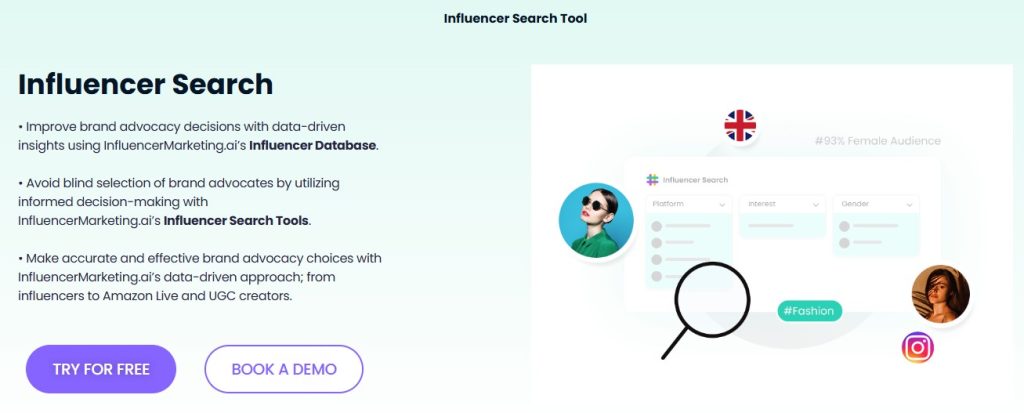
💡 Pro Tip: Don’t just look at follower counts. Compare influencers side by side using metrics like authenticity score and engagement quality to avoid fake followers and ensure credibility.
Influencer Analytics
In influencer marketing, data is everything. Analytics tools give you a clear picture of an influencer’s audience, past performance, and content effectiveness. This makes it easier to predict how well they’ll perform in your campaign.
The Influencer Network offers to all their registered users a set of great tracking tools for all their campaigns, in order to calculate revenue, performance, and control their budget.
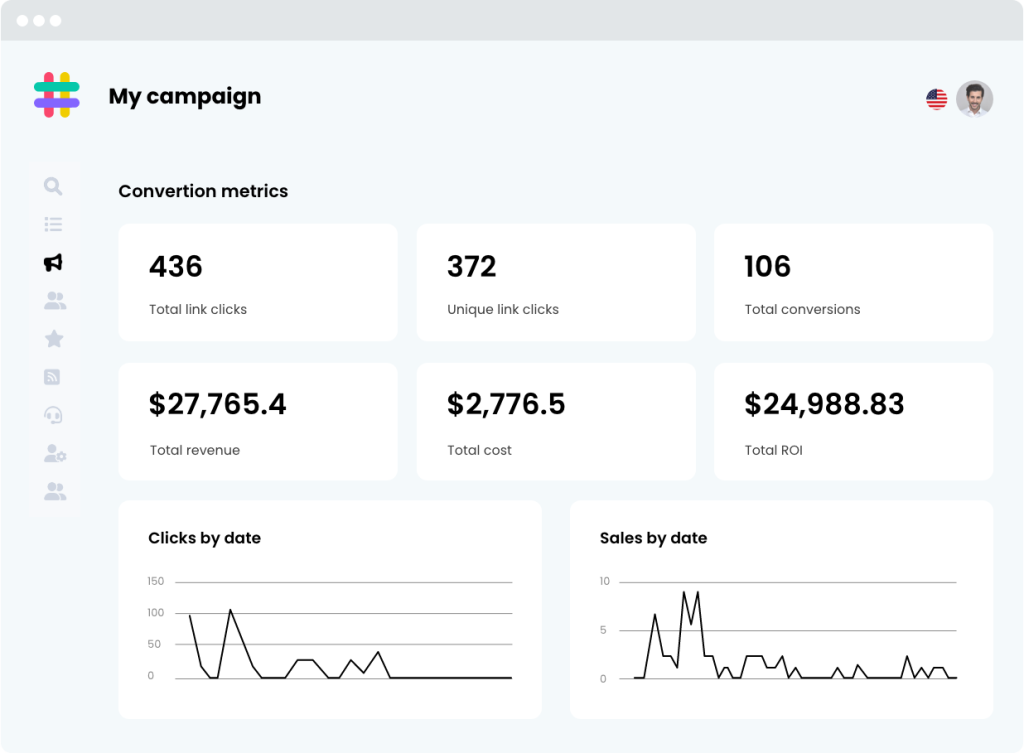
💡 Pro Tip: Look for trends in the data, such as which content formats perform best for your target audience, and use those insights to shape your strategy.
Influencer Outreach Tools
Reaching out to influencers can be time-consuming, but outreach tools streamline the process. Platforms allow you to personalize emails, automate follow-ups, and track responses, ensuring no opportunity slips through the cracks.
💡 Pro Tip: Build customizable outreach templates that highlight mutual benefits, clearly explain campaign goals, and include next steps to boost your response rates.
✅ By centralizing your influencer marketing efforts on one platform, you’ll save time, improve efficiency, and make data-driven decisions that increase ROI.
Influencer Relationship Management (IRM) Tools
Managing multiple influencer partnerships can get complicated fast. IRM tools bring everything together in one place, centralizing influencer profiles, past collaborations, and performance data. This makes it easier to track long-term relationships, organize influencers by niche or audience, and build a reliable database you can tap into for future campaigns.
💡 Pro Tip: Keep your database updated with notes on reliability, communication style, and campaign results. Over time, this helps you identify your best partners and strengthen ongoing collaborations.
Social Media Listening Tools
Social media never sleeps — and listening tools help you keep up. These platforms track online conversations in real time, giving you insight into brand mentions, trending topics, and emerging voices in your industry. It’s also a great way to spot micro-influencers who are already advocating for your brand organically.
💡 Pro Tip: When you identify influencers who mention your brand authentically, consider reaching out to turn them into formal collaborators. Their existing enthusiasm often leads to highly genuine content.
Influencer Payment Tools
Handling influencer payments can be a logistical headache without the right systems. Payment management features simplify the process by automating invoicing, scheduling payments, and managing taxes. This not only saves time but also ensures smooth, transparent transactions — which helps maintain strong, professional relationships with your influencers.
✅ With the right mix of IRM, listening, and payment tools, you can reduce admin work, make smarter decisions, and focus more on building impactful influencer partnerships.
Influencer Tracking Tools
No influencer marketing strategy is complete without robust tracking. Measuring campaign performance is essential for understanding ROI and knowing which collaborations deliver the strongest results.
Modern tracking tools make this process seamless by providing real-time insights into key metrics such as engagement, reach, clicks, and conversions. Even better, you can drill down at multiple levels — comparing post to post, influencer to influencer, and platform to platform.
💡 Pro Tip: Add UTM codes to influencer-specific links. This simple step helps you see exactly which partnerships drive the most traffic and sales.
Why Tracking Matters
Imagine knowing precisely which influencer brought the most visitors to your site, or which collaboration generated the highest sales. With that level of detail, you can double down on what’s working and refine areas that aren’t.
While you could manually track likes, comments, and shares, this quickly becomes overwhelming as your campaigns scale. That’s why influencer marketing platforms are so valuable — they centralize performance data into clear, visual reports that can be shared easily with your team or clients.
Smarter Strategy Through Data
Tracking tools aren’t just about collecting numbers; they’re about unlocking insights. By understanding which influencers resonate most with your audience, which content types perform best, and which platforms deliver results, you can continually optimize your campaigns for maximum impact.
✅ With the right tracking tools, you gain clarity, save time, and build influencer strategies that are data-driven and ROI-focused.
Frequently Asked Questions About Influencer Marketing
Influencer marketing is a strategy where brands collaborate with content creators who have built credibility and an engaged following. These influencers promote products or services to their audience, creating trust-driven exposure and helping brands reach new markets.
Unlike traditional ads, influencer marketing leverages authentic relationships. Followers trust influencers’ recommendations, making their endorsements more relatable and persuasive, which often leads to higher engagement and conversions.
Look beyond follower count. Focus on audience demographics, engagement rates, content style, and alignment with your brand values. Tools and platforms can help filter influencers by niche, location, and authenticity.
Influencers are usually categorized by audience size:
– Nano influencers (1K–10K) – small but highly engaged communities.
– Micro influencers (10K–100K) – strong niche focus with good engagement.
– Macro influencers (100K–1M) – broad reach across demographics.
– Mega influencers (1M+) – celebrities or internet stars with massive reach.
Costs vary based on follower size, engagement, niche, and deliverables. Some influencers accept free products, while others charge flat fees, commission-based payments, or tiered packages.
Track key metrics such as reach, impressions, engagement (likes, comments, shares), website traffic, conversions, and Earned Media Value (EMV). Using UTM links or discount codes helps attribute sales to specific influencers.
It depends on your goals and target audience:
Instagram – lifestyle, fashion, food, beauty.
TikTok – viral trends, younger demographics.
YouTube – tutorials, reviews, long-form storytelling.
Twitch – gaming and live engagement.
Facebook – community-driven conversations.
Platforms help automate influencer search, outreach, and performance tracking. Agencies provide hands-on strategy, influencer matchmaking, and campaign management. The right choice depends on your budget and internal resources.
Not at all. Small businesses and startups can benefit from partnerships with nano and micro influencers who deliver strong engagement at lower costs — often with a highly targeted audience.
Potential risks include fake followers, poor engagement, or misalignment with your brand values. These can be avoided by carefully vetting influencers, using analytics tools, and having clear contracts in place.
